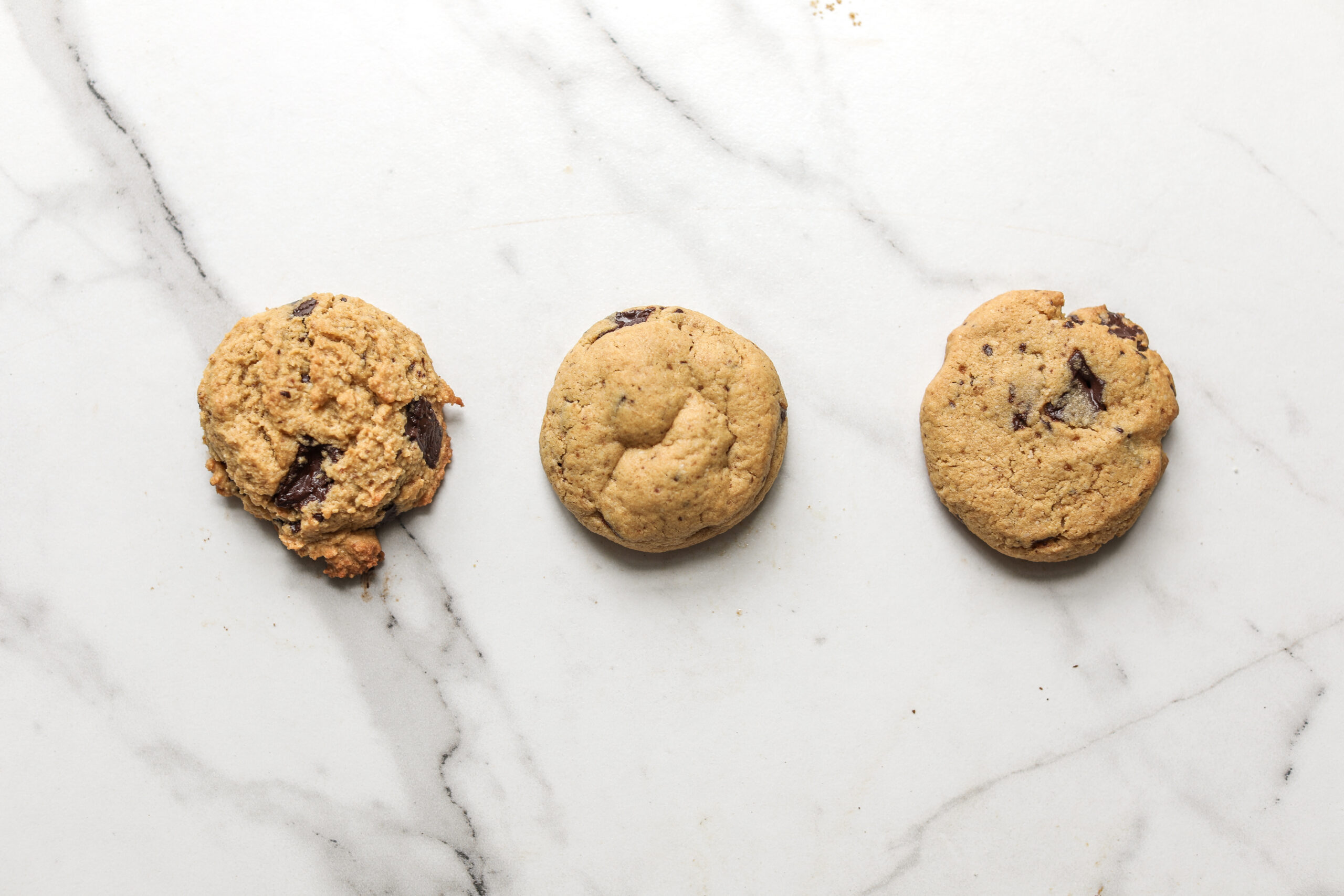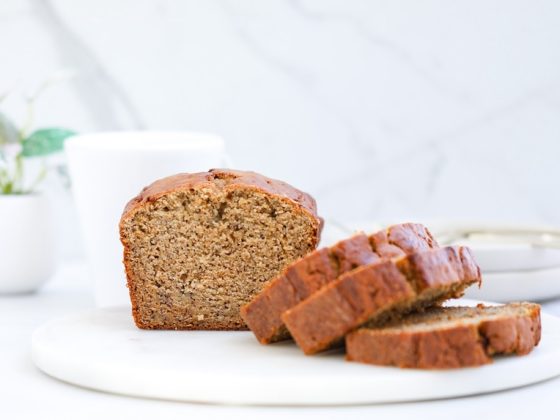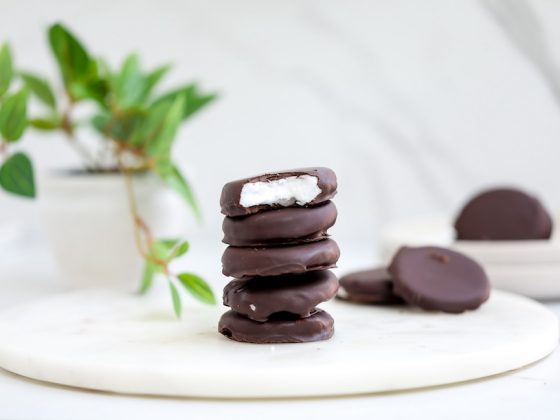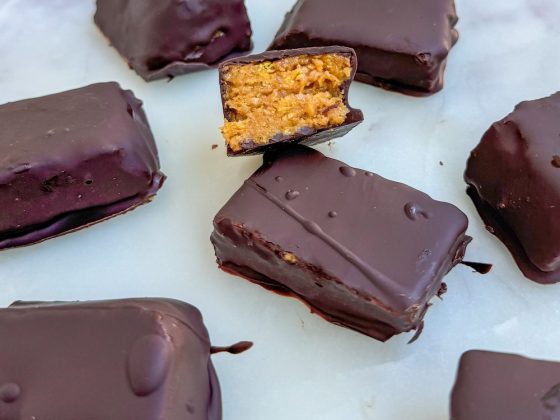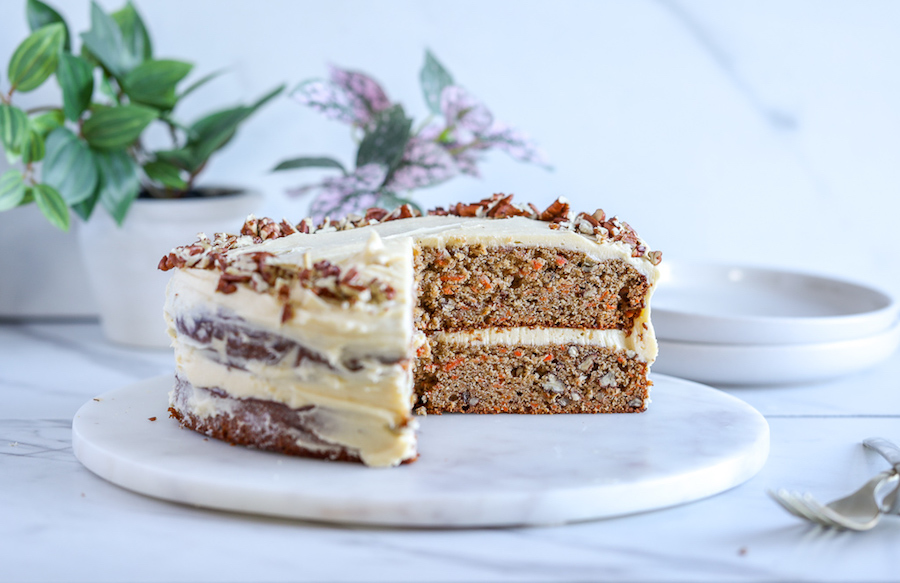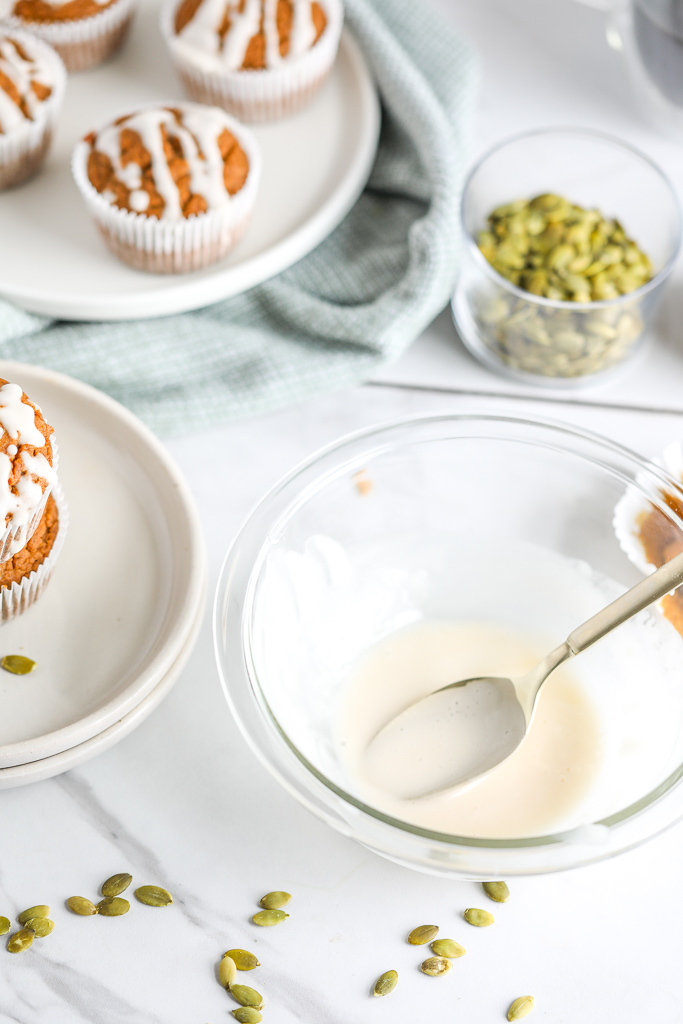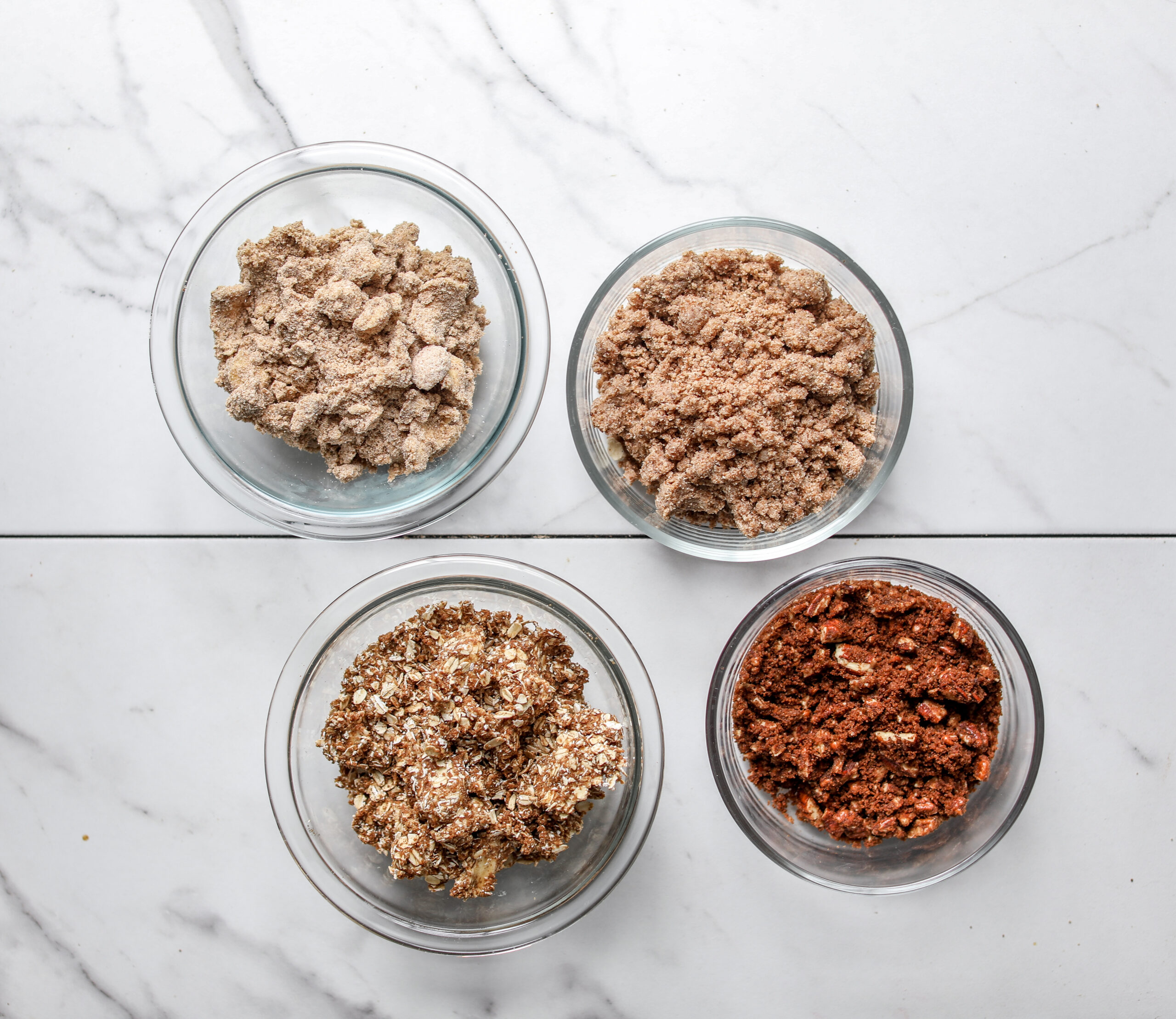In grain-free baking, you must incorporate other ingredients and action steps to make up for the absence of gluten. What purpose does gluten serve in traditional baking? Gluten is a very sticky protein that provides strength and elasticity. The word gluten is literally derived from the Latin word “glue.” Without it, there is a lack of the binding aspect that you might normally find working with conventional baked goods, especially breads. When you are baking gluten- and grain-free, you will notice a difference in texture; it will not have that “pull” to it. I would describe the batter as feeling a bit more “fluffy.”
A major role of flour in general in baking is provide structure. Whether the flour contains gluten will affect the structure, shape, consistency, and rise of the finished result. Biochemically, gluten is a strong network of proteins, and various factors in a recipe (other ingredients and process for example) – and how they interact with gluten – all play a part. It’s why they say baking is a science. This is why if you are baking gluten- and/or grain-free, you must look to those other factors in order to manipulate the method to yield a similar result to a traditional recipe. That is when it becomes fun and fascinating!
I wrote about one way recently: allowing the batter to rest. Another small step you can take is chilling the dough before baking. To get even more nuanced, the amount of time you chill the dough also matters. Refrigerating the dough allows the fatty ingredients that are found in gluten-and grain-free recipes (grass-fed butter, coconut oil, coconut milk, and nut and seed butters, for example) to solidify and hold everything together. They replace that “stickiness” that gluten provides in traditional recipes.
Consider a jar of nut butter. Have you ever noticed that if you keep your nut butter in the refrigerator it is more solid than if you were let it sit at room temperature? If you kept the nut butter in your pantry, the oils separate, and after giving it a good stir, the consistency is more creamy than if it were cold. This is because certain fats (depending on their chemical structure) increasingly solidify at colder temperatures. Fats are characterized by being a short-chain, medium-chain, or long-chain fatty acids. Examples of each are butter, coconut oil, and olive oil respectively. When you change the variable of temperature (i.e. cold, room temperature, warm, etc.) you will notice a difference in consistency of a fat.
I wanted to experiment with chilling the dough for this chocolate chip cookie recipe. I also wanted to know what would happen if I just dropped the dough on the baking sheet, rolled the dough, and then rolled and flattened the dough with my fingers. Below are my results:

As you can see, the shape and size of the cookie differs depending on how long the dough is chilled, and how it is placed on the baking sheet. This is due to how much the cookie spreads in the baking process. The more the dough is chilled, the less spread, especially if you roll the dough first. I love a soft and “pillowy” chocolate chip cookie that is smooth and round. This experiment then told me I should chill the dough longer, roll and/or roll and flatten the dough before baking, and place extra chocolate chips on top for a bit more presentation. The two photos below show the difference between rolling the dough a little tighter (left: more height, “pillowy”), and rolling and flattening the dough (right: less height, round and smooth):
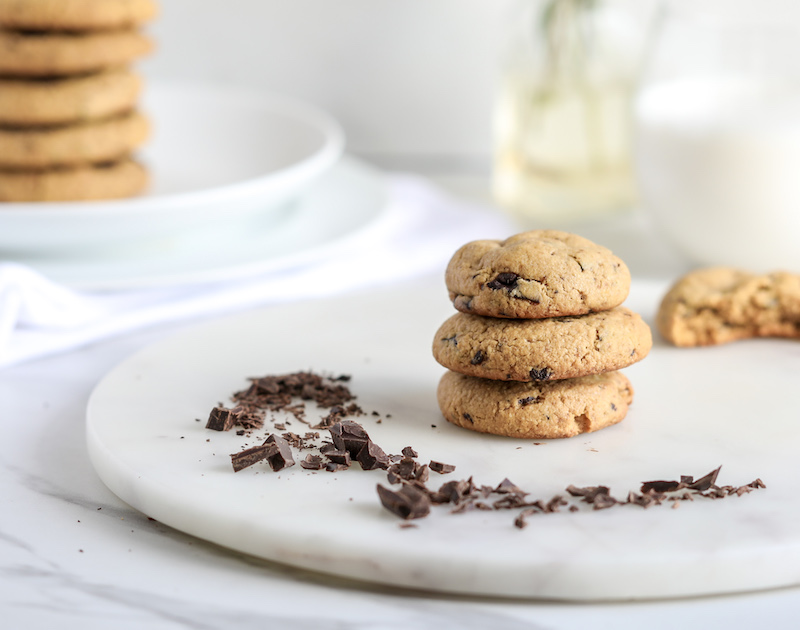
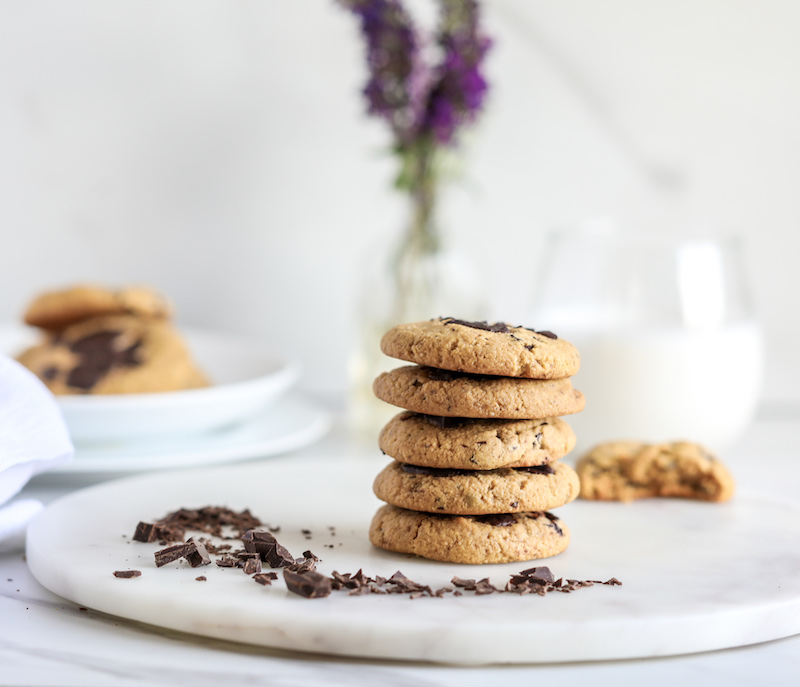
What I ended up going with was chilling the dough for longer (30 minutes), rolling, flattening, and placing some extra chopped dark chocolate on top (I was out of chocolate chips for this experiment, and te chopped dark chocolate worked just as well!).

I loved how these cookies turned out! I did use grass-fed butter as my fat, and also understand there are dairy intolerances out there. Based on my recent experiment with a Snickerdoodle cookie recipe, I think you could substitute (cold) room temperature coconut oil (so 65-67 degrees F) for the butter and come up with similar results. If you do decide to use coconut oil, I would probably chill the dough for the full 30 minutes and roll the dough without flattening. I will have to test that out myself!
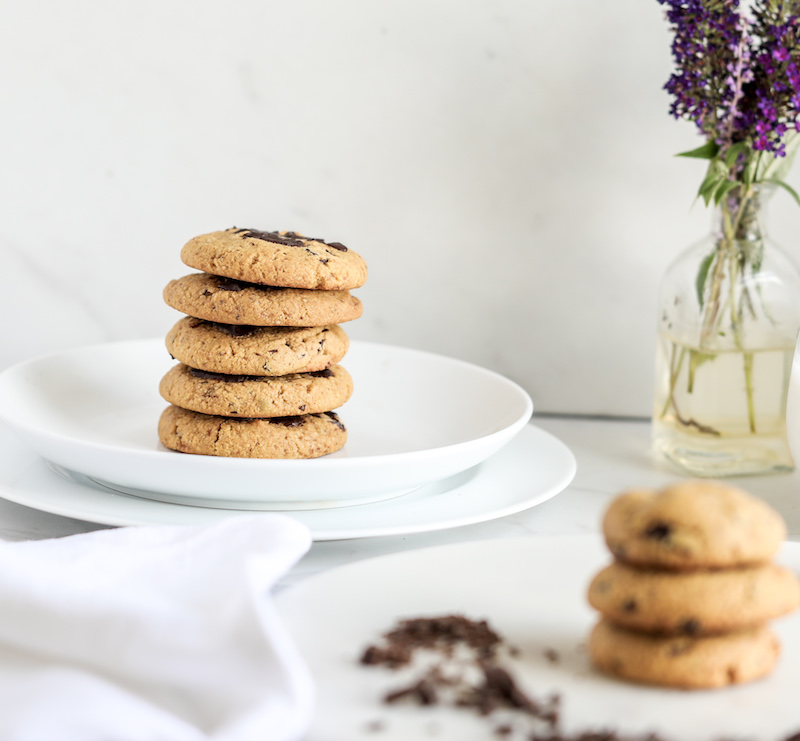
You can find the recipe for these grain-free chocolate chip cookies in this post. I hope you love them as much as I do!


